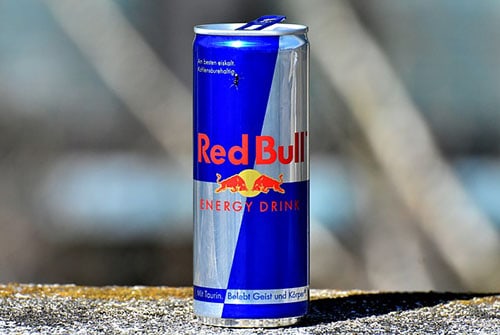Children development begins early in the womb. Although sugar is a crucial nutrient needed for proper neural and brain development in the fetus, too much of a good thing can become bad for both mother and child. This theory continues to hold truth throughout different stages of child development. What we tend to neglect is that taking in high amount of sugar is different for children than for adults. Because their bodies and brains are constantly developing, the effects can be detrimental. Here are 40 alarming statistics about the effects of sugar on children's development.
High Sugar Intake During Pregnancy
- According to the U.S. National Vital Statistics Report, about 7% babies born in 2015 suffered from macrosomia because of maternal obesity, high blood glucose level, and diabetes. (Medscape)
- Pregnant mothers with high blood sugar levels are 5 to 26% more likely to deliver babies with more health problems:
- Higher birth weight
- Shoulder dystocia
- Breathing difficulty resulting from under-developed lungs
- High red blood cell count
- New born jaundice
- Birth defects
- Congenital heart defects
- Small left colon
(National Institutes of Health)
- Children born to mothers with high blood glucose level are twice as likely to gain higher body fat and become obese later in life. By the age of 8, these children tend to be about 30% heavier than the average weight for their height standards. (American Diabetes Association)
- Children born to mothers with high blood glucose level have 27% higher risk of developing diabetes later in life (Curr Diab Rep “Obesity and Diabetes in Mothers and Their Children: Can We Stop the Intergenerational Cycle?”)
- Children born to mothers with gestational diabetes are 7 times more likely to suffer from schizophrenia due to their higher risks of experiencing hypoxia, increased frequency of inflammation, and oxidative stress. (J Psychiatry Neuroscience “Diabetes Mellitus During Pregnancy and Increased Risk of Schizophrenia in Offspring: A Review of the Evidence and Putative Mechanisms”)
- Mothers who consume high amount of sweetened beverages during pregnancy (a mean of 49.8 grams of sugar per day) had a significant negative impact on their children’s intelligence and verbal skills. (Am J Prev Med “Associations of Prenatal and Child Sugar Intake with Child Cognition”)
I recommend reading the following articles:
- What Does Your Diabetes Journey Look Like?
- Menopause and Diabetes: Does Menopause Cause Diabetes?
- Ultimate Hiking Guide for People with Diabetes
- Diabetes and Marijuana: A Possible Treatment?
- 50 Alarming Statistics on the Healthcare System of the United States
- Everything You Need To Know About Traveling With Diabetes
American Children Sugar Consumption Habits
- Public Health study found out that the average American child consumes about 32 teaspoons of sugar a day. As of 2012, the average child is taking in at least 143 calories of sugar per day. (J Acad Nutr Diet “Added Sugar Intake Across the Distribution of US Children and Adult Consumers: 1977-2012”)
- It is recommended that children over the age of 2 to adolescence should take in 50 to 60% of their total calories intake from complex carbohydrates. (healthychildren.org)
- In reality, social research studies have found that added sugars take up to as much as 40% of total daily calories intake in children and teenagers between the age of 2 to 18. (NHANES)
- The National Health and Nutrition Examination Survey found that 60% of American infants as young as 6 months of age are exposed to more than 1 teaspoon of added sugar per day. (NHANES)
- The Centers of Disease Control and Prevention suggests that children between the age of 2 to 19 should take in no more than 6 teaspoons of added sugar per day (approximately 25 grams). (Centers for Disease Control and Prevention)
- The American Heart Association recommends that children should not consume more than 8 ounces of sugar-added beverages per week. (American Heart Association)
- The National Health and Nutrition Examination Survey found that as much as 99% of toddlers between age of 19 to 23 months take in over 7 teaspoons of added sugar per day. (EurekAlert)
- Social survey studies found that boys from low-income families tend to take in significantly higher amount of added sugar than other children. The top 10% tier of boys consumed as much as 324 calories from added-sugar beverages per day. (CDC)
- The National Health and Nutrition Examination Survey data illustrates the alarming eating habits of children between the ages of 2 to 18 in the United States. The data states that their top energy sources come from:
- Pizza (136 calories per day)
- Grain desserts (138 calories per day)
- Sugary beverages (118 calories per day)
(Journal of the American Dietetic Association)
- Data from NHANES point out that the average American child take in approximately 40% of their daily total calories intake from empty calories food. Their average sugar intake adds up to about 365 calories per day. (Journal of the American Dietetic Association)
- Longitudinal studies indicates that early exposure of added-sugar beverages before the age of 6 dictates the likeliness of the children to continue their consumption habit. Those who were exposed as young as 6 months of age and consumed sugary drinks more than 3 times per week were much more likely to engage in the behavior than children who were introduced later in life or drank less servings throughout the week. (American Academy of Pediatrics)
- The 2012 School Health Policies and Practices Study and 2013 Youth Risk Behavior Surveillance System stated school districts’ restriction on add-sugar beverages sales had a great positive impact on children’s eating habits. Those who attend schools in these districts were 55% more likely to consume more milk per day and less likely to drink sugary drinks than students who attended schools that allow added-sugar beverage sales. (Journal of Adolescent Health)
Effects of Sugar on Children's Health
- It has been estimated that the United States healthcare system spends at least $14 billion annually to treat childhood obesity in hopes to prevent adult obesity and obesity-related health issues. (National League of Cities)
- Medical research studies have found that children who consume as little as 1 serving of sugar-added drink per day consistently gain more weight than children who do not consume any sugar-added drinks over the course of a year. If this habit continues or if the consumption serving increases, the weight discrepancy between the children who drink sugary beverages versus those who do not drink sugar beverages become increasing significant (Obesity Research “Sugar-Added Beverages and Adolescent Weight Change”)
- According to the National Health and Nutrition Examination Survey in 2014, about 1 in 3 children between the ages of 2 to 18 was overweight, and 1 in 6 was obese. (National Institute of Diabetes and Digestive and Kidney Diseases)
- As of 2015, more than 132,000 children and teenagers were diagnosed with type 2 diabetes. (National Diabetes Statistics)
- It has been estimated that approximately 1 in 5 children across the country are living with prediabetes conditions. (Medscape)
- Nonalcoholic fatty liver disease is an increasing health concern for American children. A correlation studies found that of all children who were diagnosed of NAFLD, 30% of them also had either prediabetes condition or type 2 diabetes. (JAMA Pediatric)
- Studies have shown that 50% of obese children and teenagers suffer from metabolic syndrome. These individuals were also more likely to suffer from cardiovascular health issues. (New England Journal of Medicine)
- NHANES data found that US children who consume added-sugar beverages have a much greater tendency to exhibit higher uric acid levels. Over the time, the elevated level contributes to the progression of hypertension later in life during adolescence and early adulthood. In a clinical study, it was found that ⅔ of teenagers with hypertension also exhibited symptoms of myocardial hypertrophy. (Circulation “Added Sugars and Cardiovascular Disease Risk in Children”)
Effects of Sugar on Children Brain Development
- Cross-sectional studies of various clinical studies have found that teenagers who take in higher amount of sugar in their daily diet tends to do worse in cognitive performance tests that consist of visual spatial learning and long-term memory. Those who take in high amount of added sugar along with low levels of omega-3 are shown to exhibit the worse long-term memory ability. Children who take in higher amount of complex sugars and fibers (75% of their daily total calories intake) tend to score much better than other children do. (Nutrients)
- A series of questionnaire studies demonstrated children who drink more than 4 servings of sugary beverages per day are much more likely to exhibit mental distress and depression. These individuals also had more school conduct problems than others who consumed less sugary beverages. (AJPH)
- Another experiment study found that young children had more difficulty concentrating and exhibited more conduct problems after taking as little as 6 ounces of juice sweetened by sucrose. (Journal of Abnormal Child Psychology)
- An Australia research study shows in young rat model that taking in excessively high amount of sugary beverages can alter the brain the same way prolonged stress and emotional trauma do to the hippocampus in the rats’ developing brains. For children who are experiencing a lot of changes in their brains, the high level of sugar intake can cause hyperglycemia and result in elevated secretion of cortisol seen only in extreme maltreating circumstances. Depending on the amount of sugar intake, the cortisol level can escalate as much as 5 times the normal range. (Endocrine)
- For children who have prediabetes or type 2 diabetes, the frequent cases of hyperglycemia can cause a lot of damage to the brain as they experience much higher cortisol levels than children who do not have diabetes.
- Although consuming too much sugar is damaging to the children brain, consuming less than 3.5g of simple sugar from fruits and low intake of vitamin C were shown to significantly increase ADHD risk in children. (Synapse)
Children and Energy Drink Consumption
- National self-report surveys indicates that 30 to 50% teenagers across the United States are consuming energy drinks. On average, a 20 oz. of energy drink contains 54 to 62 grams of high fructose corn syrup. This quantity is more than twice the recommended sugar intake for adolescents (25 grams maximum per day). (Pediatrics)
- In a 2017 national survey, 30% American adolescents reported drinking their first energy drink before the age of 12. 81% confirmed that they drank an energy drink at least once a week. (Chapman University)
- 40% of teenagers report that they experienced an adverse effect after drinking an energy drink in the past. 15% admitted to mixing energy drinks with alcohol for consumption, and 9% stated that they mixed energy drinks with illegal drugs. (Science Daily)
- In 2015, 2062 calls were made to the United States poison centers concerning energy drink exposure to children under 6 years of age. A majority of the cases involved with the child having a seizure or experiencing extreme side effects after consumption. (CNN)
- In 2007, there were 2506 energy drink related death cases that occurred to individuals younger than the age of 19. (Pediatrics)
Further reading:
- 101 Yummy Snacks and Treats for Low-Carb Diet
- How To Prevent Hospitalization As A Result Of My Diabetes Part 1
- Can You Increase Your Immunity If You Have Diabetes?
- Can Diabetes Cause Sexual Dysfunction in Men and Women?
- 13 Amazing Management Tips for Adults Living with Type 2 Diabetes
- Is Diabetes Out of My Control?
Sugar and connection with inflammation
- Studies indicate that children who consume higher amount of fructose are more likely to suffer from inflammation problems. When paired with a mal-nutritional diet, they are also twice as likely to developing inflammatory bowel disease. (Nutrients)
- For children and teenagers who suffer from developing inflammatory bowel diseases, 80% have great improvement when they are put on the specific carbohydrate that eliminates all sugars from their diets for 12 weeks. (Seattle’s Children Hospital)
- Children who regularly consume high amount of sugars are most susceptible to gout problem. In the past, this health problem is extremely rare in children. However, the prevalence in juvenile gout has significantly increased over the years. In 2015, there were 200,000 American children and teenagers suffering from juvenile gouts. (Centers for Disease Control and Prevention)
These statistics point to the damaging effects sugar have on children. But what is also equally important is that we as parents, school authorities, and society members play a huge role in shaping their eating habits. By teaching children healthy eating habits and developing their palates for better food choices, we can prevent the spreading of so many chronic diseases and extreme overspending of the United States healthcare system.







